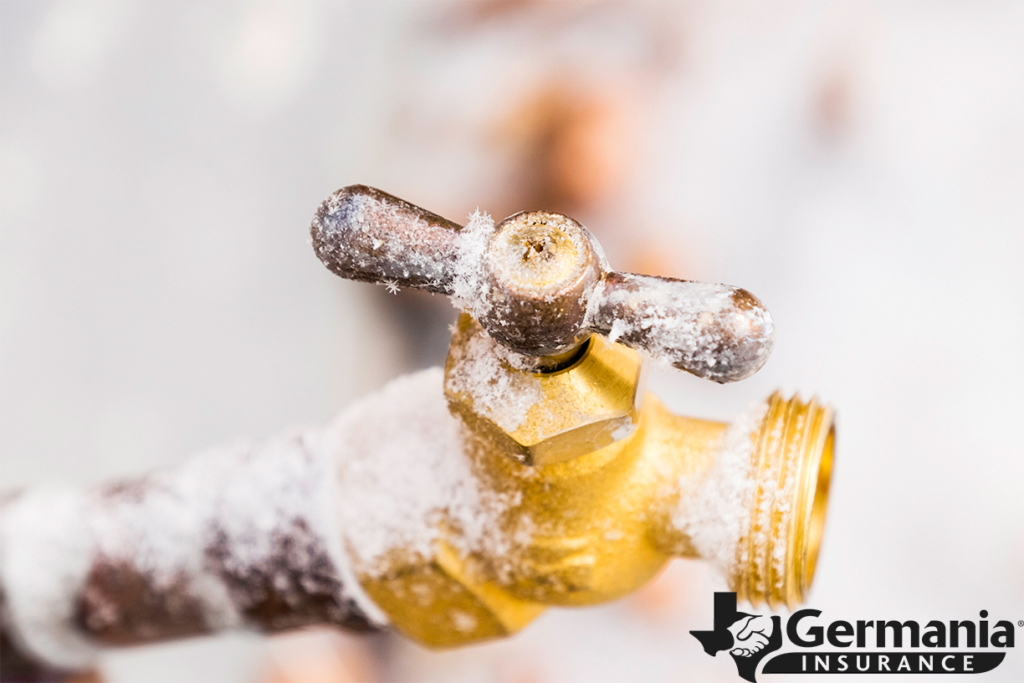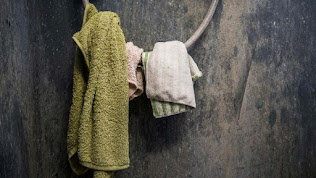Winterizing:
How to Prepare your Property for Texas Winters

What do you do when winter hits in Texas? You probably dig out your coats, gloves, and thick socks and bundle up like you’re climbing Mt. Everest! But your fingers and toes aren’t the only things at risk of freezing during the chillier portions of Texas’ winters; your property and vehicles can suffer, too. Unless you know how to protect them from the coldest Texas has to offer, you might find yourself with frozen faucets or a block of ice for an engine block. Follow this winterizing checklist and learn how to prepare your property for Texas winters.
Winterizing Your Home
Cover Outdoor Pipes – Outdoor hoses, pipes, and faucets are the most obvious things at risk of freezing. If they are filled with water when the cold hits, it could freeze, expand, and rupture. If temperatures aren’t too low for too long, a styrofoam faucet cover can be a cheap solution. These simply latch on to the spigot and seal it off from the outside air. However, if you’re expecting intense cold for a sustained period of time, it might be necessary to cut off the water supply to the outside faucets and drain them. This is the only sure way to prevent them from freezing and breaking.
Check the Chimney – If you use a fireplace to keep your house nice and toasty, make sure your chimney flue isn’t filled with squirrel or bird nests before lighting that first fire. It’s also a good idea to build a smaller preliminary fire to allow the hot air to rise all the way up through the column before opening the flue. Otherwise, the dense, cold air could flood in and push the smoke out before it’s had a chance to warm the pathway up and out.
Check the Windows and Doors – Heaters and fires won’t do much good if the warm air is escaping! Inspect your windows to make sure they are properly sealed and cover any holes with a durable caulk. It’s also important to check the weatherstripping around your door frame and replace it if it’s worn or damaged. Not only does this keep the cold air out, but it also ensures little critters don’t invite themselves in and take a seat next to you at the fire!
Inspect the Roof – Hot air rises, so it’s important that your roof is nicely covered. If you’re confident with a ladder, inspect the shingles and make sure there are no obvious holes. While you’re up there, you might as well clean all of the leaves and sticks out of the gutters and downspouts. Clogged gutters can accumulate extra water, which can be a big problem, especially when frozen.
Shut Off Sprinkler Systems – Most sprinkler systems are made out of plastic piping, which can easily burst if frozen. While the ground can be sufficient insulation from a more mild freeze, it’s better to er on the side of caution. Your system should have a valve that cuts off water to it as well as a way to drain the remaining water. If you’re unsure of how to go about doing this, consult the owner’s manual if you have one, or consider calling the landscaping company that installed it for further advice.
Cover Plants and Landscaping – Plumbing isn’t the only thing that hates freezing weather! Your plants need to stay warm, too. If you have potted plants, find a place in a shed or garage that can offer some protection from the frigid elements. If they are planted in the ground, try and cover them with bedsheets and quilts. This won’t always save them, but short of digging them up and bringing them inside, it’s the only real option you have.
Winterizing Vacant Property
Preparing a vacant property, such as a vacation home, for winter is fairly similar to preparing your regular house. However, because it won’t’ be heated on the inside while you’re gone, there are a few steps you should take in addition to the ones mentioned in the section above.
Shut off the Water Main – Before you completely drain the water in your house, you’ll need to cut off the water main. If you don’t know where this is, you will, unfortunately, have to do a bit of searching. It might be easier to simply shut it off at the water meter if you have access to it.
Drain it All – With the house shut off from the source, you can now empty your pipes. Open all of your faucets to make sure every point of the plumbing system is drained. Flush your toilets to empty the tank and bowl and use a small cup to scoop out the rest if needed. Finally, turn off your water heater and carefully drain it. Usually, you’ll have to connect a garden hose to it so that you can direct the water outside. Check the owner’s manual for specific details.
Use Antifreeze Liquid – Even if you’ve flushed the toilets and cut off the water supply, there should still be water in the traps beneath your toilets and sinks. This is important as it prevents gases from the sewer lines from rising up into your house. To maintain that barrier, simply pour antifreeze in your sinks, toilet bowls, and the toilet’s tank (if it still has a little water in it). You should not use the same antifreeze that, say, you use in your car, however. There are safe, non-toxic varieties of antifreeze specially designed for winterizing pipes.
Winterizing Your Apartment
Usually, there isn’t much you need to do to prepare for freezing temperatures in an apartment. Many of the previously mentioned tips, such as checking windows and doors, apply here as well. However, it’s important to contact your front office or rental agency to check if they have any specific instructions. They may want you to let your faucets drip or ask that you keep your heater set to a certain temperature when you’re gone.
Winterizing Your Car
Cars have a lot of moving parts and require regular maintenance to keep them road-worthy. This is especially true during the cold of a Texas winter as freezing temperatures can cause unique problems and hazardous driving conditions.
Use Antifreeze – Your engine coolant can’t do its job if it’s frozen like a popsicle. Check with your mechanic or consult your owner’s manual to find out what type of antifreeze your car needs and how much you should add.
Check the Battery – Cold weather can diminish the power of your battery, so it’s important that you make sure it has enough of a charge to handle that. If you don’t have your own multimeter to test the voltage, most auto parts stores will do so for free.
Check the Hoses – Check under the hood and inspect any rubber or plastic belts and hoses for cracks and signs of brittleness or wear. This is important to do regardless of the temperature, but a running engine is especially important during the winter.
Install Winter Wipers – Visibility is incredibly important, especially during the winter months. Freezing precipitation can cause serious issues, so it’s important to have wiper blades that can handle more difficult tasks.
Install Winter Tires – If you live in a part of Texas that receives a significant amount of snow or freezing rain during the winter, you might consider outfitting your car with winter tires. These typically have special treads that provide better traction in such an environment.
Test Defrosters – Defrosters can make life much easier, but only if they work! Whether you have heating elements on your windows or simply rely on the AC system, make sure they work as intended before you go out into the cold.
Winterizing Your RV
Winterizing a Recreational Vehicle can be tricky. Because plumbing layouts vary, the process can be unique. Your owner’s manual should have detailed instructions and sometimes there are checklists posted on the insides of cabinets or under sinks.
Disconnect Water Lines – In general, the first step is always disconnecting any outside water source from your RV. Turn off the valve at the source and disconnect any hoses before draining the plumbing inside.
Drain the Plumbing – This is where the process can greatly vary based on your model. Typically, there are valves beneath the sink that allow you to drain the water lines within the RV. You’ll also want to locate the drain for the water heater and water reservoir, which are usually behind an exterior panel. Finally, if you have a grey or black water tank, you’ll need to hook your RV up to a sewer line and drain those as well. Again, consult your owner’s manual or talk to the dealership where you purchased your home-on-wheels for specific instructions or advice.
Use Antifreeze – Like a house, RVs typically have gas traps beneath sinks and possibly toilets. Using specialized RV antifreeze, fill the traps as needed to maintain the barrier and prevent freezing.
by Geoff Ullrich
About the Author - Geoff Ullrich is a writer and Content Marketing Specialist at Germania Insurance.
or
















